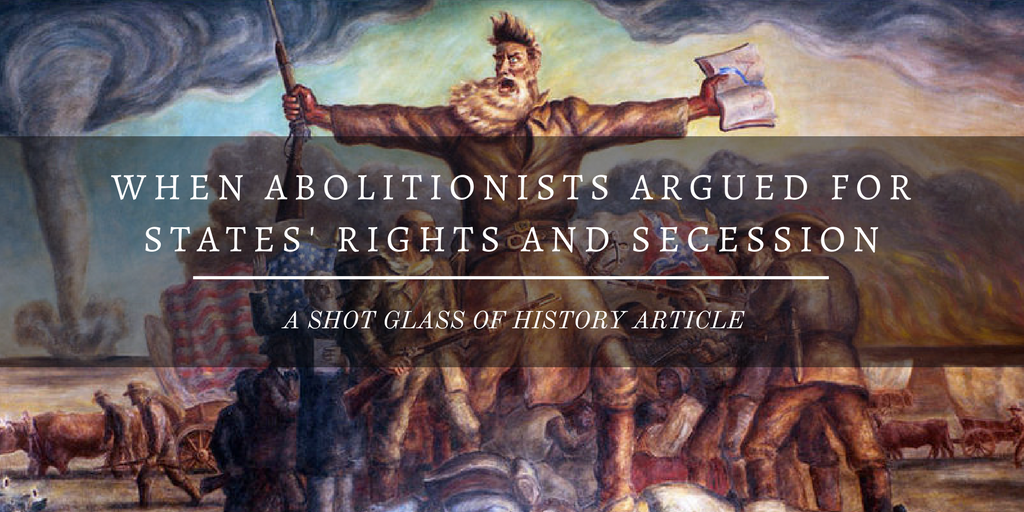Emancipating Slaves, Enslaving Free Men: A History of the American Civil War
BY JEFFREY ROGERS HUMMEL
OPEN COURT, 448 PAGES, $29.95
–
States’ rights and secession haven’t always been synonymous with the South. In fact, in the lead up to the Civil War, abolitionists denouncing the Fugitive Slave Act defended both states’ rights and secession, while it was southern politicians that argued for more Federal involvement. In Jeffrey Hummel’s book, Emancipating Slaves, Enslaving Free Men, we’re given a fascinating look at the complex battle to end slavery.
The political debate centered around slavery’s Achilles heel, the runaway slave. So long as slaves had a place to run to for freedom, the entire economic viability of the slave system became called into question. “If blacks could simply obtain freedom by slipping across an open border, enforcement throughout the upper South was compromised, and the lower South would feel the repercussions” (Hummel, Emancipating Slaves, Enslaving Free Men, 54).
In order to prevent northern states from becoming a safe-haven for runaways, the South had insisted on including a fugitive slave clause in the Constitution. According to Article IV, Section 2, all states, including free states were required to return escaped slaves. “This in effect required the national government to subsidize the enforcement of the slave system with resources from slaveholders and non-slaveholders alike” (p. 11).

Underground Railroad Routes to Canada
However, abolitionists remained undeterred. They challenged the Fugitive Slave Act in the courts, and they illegally set up the Underground Railroad which helped assist runaway slaves make their way to Canada. In 1842 the state of Pennsylvania even ended up challenging the Act in the Supreme Court. Trying to find a middle path, the Court concluded that the Constitution did in fact grant a positive right of an owner to his slave, so no state could prohibit a master from coming north and retrieving his “property.” However, Justice Story also added that the states did not have to participate in enforcing the Fugitive Slave Act.
Seven northern legislatures responded with personal liberty laws. These either prohibited state officials from participating in a recapture or forbade holding fugitive slaves in state or local jails. In the face of these hostile enactments, the legal privilege to head north and personally retrieve slaves did not amount to much. (p. 54)
As a result, in 1850 the South managed to work out in the Missouri Compromise a more stringent version of the former Fugitive Slave Act. Several state governments responded by openly defying the law, and attempted to find ways to make enforcing it impossible.
It was a huge source of irritation and contention among southerners that northern states were nullifying Federal law within their own borders. Hummel quotes a Virginia Congressman, Charles James Faulkner referring to the earlier actions of Pennsylvania:
slaves are absconding from Maryland and this portion of Virginia in gangs of tens and twenties and the moment they reach the Pennsylvania line, all hopes of their recapture are abandoned. The existence of such a law on the Statue Book of any State is not only a flagrant violation of the spirit of the Federal Constitution and indeed of its express provisions, but is a deliberate insult to the whole Southern people, which . . . would amongst nations wholly independent and disconnected by Federal Relations be a just cause of War. (p. 55)
However, for many abolitionists, they would rather not live under a constitution that violated their conscience, and they argued that due to its immorality the Constitution had lost all the legal force of law. Leading abolitionist, William Lloyd Garrison declared the Constitution “a covenant with death and an agreement with hell,” and publicly burned a copy at a 4th of July celebration: “So perish all compromises with tyranny!” If the abolitionists could not outlaw the practice of slavery in the United States, the next best thing was for the free states to leave the Union and provide a legal asylum for runaway slaves. The slogan for the leading abolitionist newspaper, The Liberator, was “No Union with Slave-Holders” (p. 21).
While this anti-nationalism did not sit well with many non-abolitionists in the North, Southern slave owners were livid at abolitionist proposals for disunion. If northern states nullifying federal Fugitive Slave laws threatened the economic viability of slavery, then a few northern states seceding would make it impossible to continue the practice. Northern abolitionists were so eager to separate from the South that when the first southern states announced their independence, not only did the abolitionists such as Garrison cheer the South’s departure, but they actually worried that the Southern states were merely bluffing.
The withdrawal of the deep South’s representatives from Congress made free-state control over the national government more pronounced than ever. The Republicans would have a free hand in the territories, whereas the economic viability of a small, independent slave republic was in doubt, especially if it could not expand. (p. 137)
In the end, Hummel’s point is that merely by northerners defending states’ rights and secession, slavery would have ended without the deaths of hundreds of thousands of U.S. soldiers in the Civil War.


